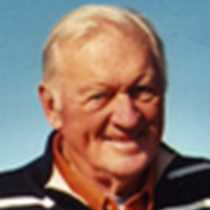Astoria, Oregon
Bright sunshine, flapping gulls and the backdrop of Astoria’s high hills overlooking the Columbia River greeted National Geographic Sea Lion this morning. One hundred yards away, the world-class Columbia River Maritime Museum opened its doors to guests at 9:00 A.M. At that moment, docents were standing by to escort our guests through the vast rooms of this institution which was established in 1962.
One of the more colorful Museum displays, next to maritime equipment, maps, paintings and a dramatic U.S. Coast Guard exhibit, was a history of the one-time wild, raucous and financially successful fishing and salmon canning era, 1870s-1940s.
At 10:15 everyone boarded a motor coach for the 1805-1806 campsite of the Corps of Discovery, Fort Clatsop. While traveling south along Highway 101, the Ship’s Historian narrated the story of Astoria and bits of Columbia River geology and lore. Since the Lewis & Clark Bicentennial two years ago, Fort Clatsop is part of a mix of regional, national, and state parks – 12 separate park sites – dedicated to the intrepid party of 33 men, one woman and a baby.
Today’s Fort Clatsop is a third generation log structure occupying what archeologists and historians believe is the true site of the original winter home of the Corps. Lewis described the area as “a most eligible” site.
Two years before the Corps’ arrival, President Thomas Jefferson wrote to his friend Dr. Benjamin Barton, stating that (Captain Lewis) “possesses a remarkable store of accurate observation on all the subjects of the three kingdoms.” When the Corps arrived at the rainy Clatsop site in November 1805, Lewis, Clark and many of their men had collected hundreds of plant and animal specimens. The captains also carried scraps of maps and notes that, at Clatsop, would emerge as the bulk of their finished Journals. The return motor coach ride was narrated by the Ship’s Naturalist who described efforts to enhance regional salmon habitat.
Following lunch, National Geographic Sea Lion guests boarded kayaks and Zodiacs to roam among verdant uninhabited islands east of Astoria. This area is officially called the Lewis & Clark National Refuge. Wildlife along these rough, foliage-enveloped shorelines included a troika of bald eagles, several Bohemian waxwings, osprey (and several of their abandoned nests atop maritime pilings), a variety of ducks, a peregrine falcon and what appeared to be a double crested cormorant with a wounded wing.
The surrounding flora included big leaf maple, forests of red alder and tall grasses. Kayakers and Zodiac riders inspected an old railroad swivel bridge and tracks which once served a forest products industry that has collapsed and moved to the Coastal Range.
After recap – more salmon issues and an Indian folk tale – guests enjoyed a wonderful dinner. After the evening meal, the Ship’s Historian held a Lewis & Clark Question & Answer session in the Lounge.



